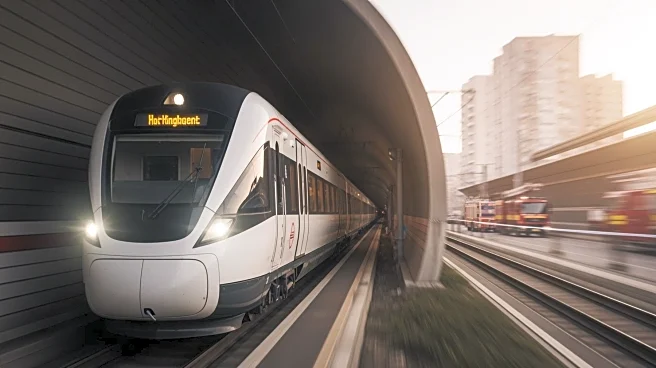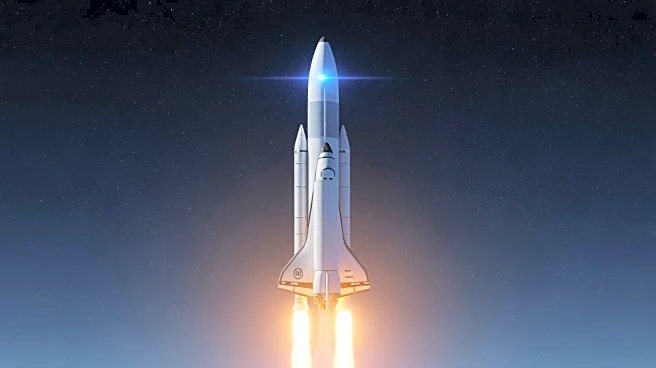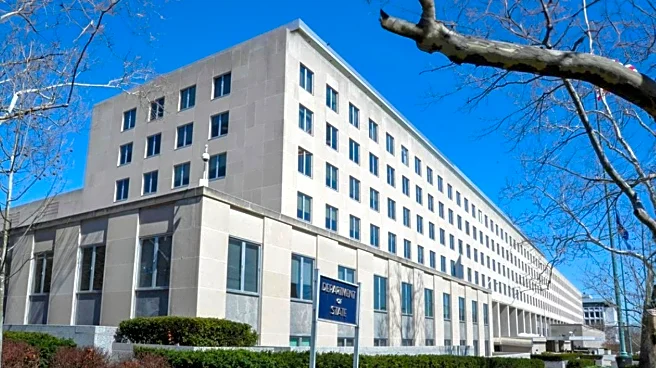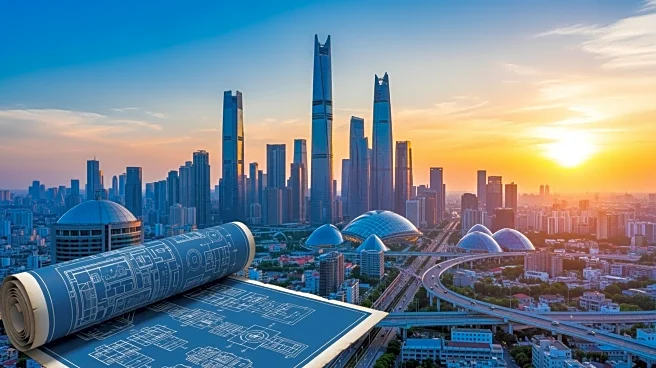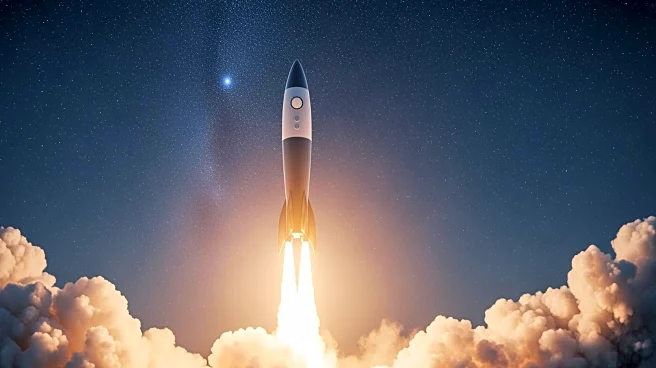What's Happening?
Eurostar has announced plans to introduce double-decker trains for the first time through the Channel Tunnel. The rail operator confirmed an order of up to 50 trains from manufacturer Alstom, aiming to expand its fleet by nearly a third. This €2 billion
deal includes 30 'Celestia' trains, with an option for 20 more, expected to start service in 2031. Each train will be 200 meters long, and when coupled, will offer approximately 1,080 seats. Eurostar's chief executive, Gwendoline Cazenave, expressed pride in bringing these trains to the UK, promising exceptional comfort. The expansion also involves significant investment in the Temple Mills depot in London, the only UK facility capable of accommodating these larger trains.
Why It's Important?
The introduction of double-decker trains by Eurostar marks a significant development in cross-Channel rail services, potentially increasing passenger capacity and enhancing travel comfort. This move could bolster Eurostar's competitive edge, especially as other operators consider entering the market. The investment in infrastructure, such as the Temple Mills depot, underscores the commitment to long-term growth and service improvement. However, adapting the broader UK rail network to accommodate such trains remains unlikely due to historical infrastructure constraints, posing challenges for widespread adoption.
What's Next?
Eurostar plans to begin using the first six double-decker trains by 2031, with further expansion contingent on infrastructure developments. The company aims to increase its passenger numbers from 19.5 million to 30 million annually. As Eurostar expands its fleet, potential rival operators may seek opportunities to enter the cross-Channel market, prompting competitive dynamics. The feasibility of adapting other parts of the UK rail network for double-decker trains remains a topic of discussion among industry experts.
Beyond the Headlines
The introduction of double-decker trains could influence future rail infrastructure projects, highlighting the need for modernization to accommodate larger trains. This development may also prompt discussions on sustainable transport solutions, as increased capacity could reduce the carbon footprint per passenger. The investment in the Temple Mills depot reflects a strategic focus on enhancing operational efficiency and service quality.
